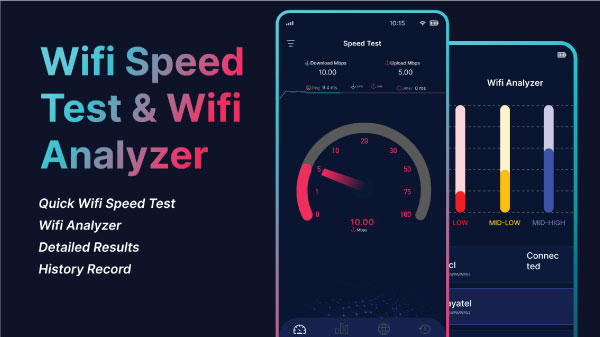Performing a Speed Test the Right Way

So, you think you’re not getting the speed you’re paying for? There are many factors that contribute to the ‘speed’ you can be seeing on your device. These factors include the number of devices connected, the type and amount of data that is being uploaded and downloaded, the capabilities of your WIFI router, proximity to your WIFI router and more.
A speed test can help you determine if there is an issue with your internet service, but first you need to understand some fundamentals of how your service is delivered and its capabilities.
Let’s consider some scenarios that will shed some light on internet speed and capabilities:
- Imagine a gallon of water being poured into a funnel. This funnel is connected to 5 tubes – each of these tubes connect to their own gallon container. How much water would you expect to see in each of the 5 containers after the gallon had been emptied?
- You live 5 miles from work. During rush hour, it takes you 30 minutes to travel those 5 miles. However, at 2AM you can travel that same route in just 7 minutes.
Wireless broadband internet is delivered with 2 speeds, an upload speed and a download speed. A plan designated as 100/10 means that download speeds will be up to 100Mb per second while upload speeds will be up to 10Mb per second. These are the speeds that are delivered to the CPE (Customer Premise Equipment) on the exterior of your home and fed into your home via Ethernet cable to the POE (Power Over Ethernet) brick. The WIFI router is connected to the POE to broadcast the signal to nearby devices.
The only way to accurately test the speed being delivered to your home is directly from the POE. Why can’t you run a speed test via the WIFI router? Let’s look at the scenarios described above to answer that question.
In the first example with the funnel, the gallon of water represents the internet service available to you at the point in enters the home. The funnel attached to 5 separate tubes represent the WIFI router. The more devices connected to your service, the slower your speed will be at each of these devices. Imagine that the funnel is faulty – maybe it is partially plugged or has a hole in it – water is not moving freely or is being lost. If your WIFI router is old or not designed to handle the bandwidth of your plan, you will see speed issues.
The type and amount of data being uploaded and downloaded throughout the day has an effect on your speeds as well. In the second example above regarding rush hour traffic, internet data works in a similar way. Just like a highway that has a finite amount of space to accommodate traffic, so does the WIFI device that conveys internet traffic. The more devices connected pushing data, the slower the process will be. Being stuck in traffic during rush hour can be frustrating but being in rush hour with big trucks hauling huge trailers may make the situation even worse. The type of data being transmitted influences speed as well. Running a speed test while your child is playing Xbox would not be an accurate reflection of the internet speed that your provider is supplying to your home.
Test from the Source! If you want to know if your spring water is contaminated, you wouldn’t collect the water from the stream at the bottom of the hill, would you? To get an accurate read of internet speed, you will need to bypass WIFI and test directly from the POE – the source. This is done by connecting an Ethernet cable from the POE directly to a computer. If your computer does not have an Ethernet port, you can purchase an Ethernet to USB adapter to make this connection.
Once you have bypassed WIFI and connected your computer directly to the POE, you can run a speed test at Speedtest.net
